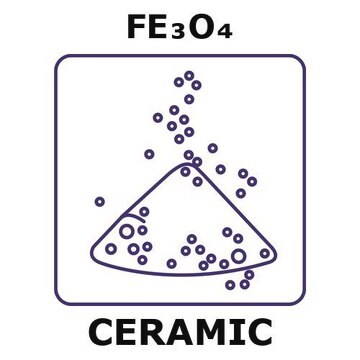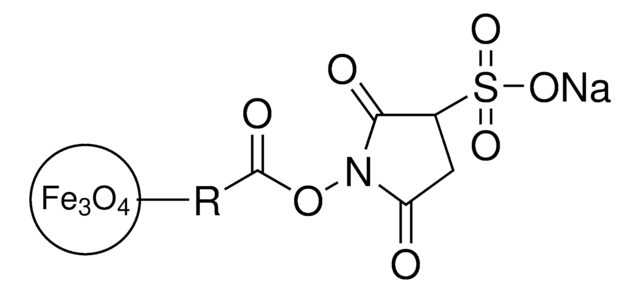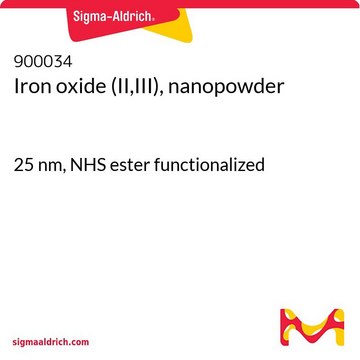637106
Iron(II,III) oxide
nanopowder, 50-100 nm particle size (SEM), 97% trace metals basis
Synonyme(s) :
Ferrosoferric oxide, Iron oxide black, Magnetite
About This Item
Produits recommandés
Niveau de qualité
Essai
97% trace metals basis
Forme
nanopowder
spherical
Superficie
6-8 m2/g , estimated
Taille des particules
50-100 nm (SEM)
Pf
1538 °C (lit.)
Densité
4.8-5.1 g/mL at 25 °C (lit.)
Masse volumique apparente
0.84 g/mL
Application(s)
battery manufacturing
Chaîne SMILES
O=[Fe].O=[Fe]O[Fe]=O
InChI
1S/3Fe.4O
Clé InChI
SZVJSHCCFOBDDC-UHFFFAOYSA-N
Vous recherchez des produits similaires ? Visite Guide de comparaison des produits
Catégories apparentées
Description générale
Application
Remarque sur l'analyse
Code de la classe de stockage
11 - Combustible Solids
Classe de danger pour l'eau (WGK)
nwg
Point d'éclair (°F)
Not applicable
Point d'éclair (°C)
Not applicable
Équipement de protection individuelle
dust mask type N95 (US), Eyeshields, Gloves
Faites votre choix parmi les versions les plus récentes :
Déjà en possession de ce produit ?
Retrouvez la documentation relative aux produits que vous avez récemment achetés dans la Bibliothèque de documents.
Les clients ont également consulté
Articles
Professor Randal Lee (University of Houston, USA) discusses design considerations for iron oxide magnetic nanospheres and nanocubes used for biosensing, including synthetic procedures, size, and shape. The effects of these variables are discussed for various volumetric-based and surface-based detection schemes.
An article concerning self-propagating reactions induced by mechanical alloying, presented by Sigma-Aldrich.com.
Graphene is a unique two-dimensional (2D) structure of monolayer carbon atoms packed into a dense honeycomb crystal that has attracted great interest due to its diverse and fascinating properties.
Global Trade Item Number
| Référence | GTIN |
|---|---|
| 637106-250G | 4061832723600 |
| 637106-100G | 4061832723594 |
| 637106-25G | 4061832723679 |
Notre équipe de scientifiques dispose d'une expérience dans tous les secteurs de la recherche, notamment en sciences de la vie, science des matériaux, synthèse chimique, chromatographie, analyse et dans de nombreux autres domaines..
Contacter notre Service technique





